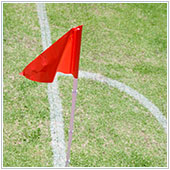 What are Google Chrome Flags?
What are Google Chrome Flags?
One of the most popular Internet browsers is Google’s Chrome. While it does the same thing as every other browser out there – allows users to surf the Web – it has a number of functions and features that set it apart. In order to keep the browser popular, Google is constantly working on new features and testing, or experimenting, with them. Did you know that you can access many of these features?
In many Google products, features that Google wants users to test, and ones it is experimenting with, are usually found in Labs. In Chrome, these features and functions are called Flags. You can access and enable experimental Flags by:
- Opening Chrome, or a new tab if Chrome is already open.
- Clicking on the URL bar/address bar/search bar
- Entering about:flags or chrome://flags.
When you navigate to Flags, you should see a page open with the nuclear symbol at the top, and a warning message. If you scroll down, you will see the experimental features. Clicking Enable under each entry will turn on the function, and you will have to restart Chrome browser in order to get the feature working properly. When you click Enable, you should see a white band pop-up at the bottom of the window. Press Relaunch Now to select enabled the feature and restart the browser.
If you plan on enabling any Flags, you should be aware that these are experimental features that are not fully stable. They could cause your version of Chrome to crash, or become sluggish, and some users have noted that certain Flags didn’t work on their system. Should you notice an increase in crashes after you enable a Flag, you should disable it by going back into chrome://flags, finding the function and clicking Disable.
Five useful Chrome Flags
Here are five interesting type Chrome Flags. The easiest way to find them is to open chrome://flags, hit Ctrl + F (Apple key + F on Mac) and enter the name of the Flag.
- Enable Rich Notifications (Windows) – When you turn on this feature, you will get notifications from Chrome e.g., chat messages, emails, etc. that pop-up in your computer’s notification center or tray – this will add a speech bubble to the bottom right of your screen in Windows. When you get a new message in Gmail, it should pop-up in the bottom right of your screen for a few seconds, even if Chrome is closed.
- Password Generation (Windows, Mac) – Many network security experts recommend that you should not use the same password for every account you have online. However, developing and storing unique passwords can be hard. This Chrome flag is meant to help. When enabled, it adds a key icon to the password bar on new account creation pages. If you click on it, Chrome will generate a password for you. This could be useful, especially if you have a hard time coming up with strong passwords.
- Enable Desktop Guest mode (Windows) – If you work on a public machine, or have colleagues who use your computer, Chrome can be a bit finicky, especially if you have signed into the browser. This Flag will enable a guest user profile from Chrome, which can be accessed through the desktop.
- Tab overview (Mac) – Mac users likely know the popular Safari feature where you can swipe down to see all open tabs. This Flag brings the same functionality to Chrome. If you swipe down with three fingers, an overview window pops up with all of your open tabs. Clicking on it will take you to that page. This makes moving between tabs easier, especially if you are in the habit of having more than one Chrome window open at any given time.
- Stacked tabs (Windows) – Tabs are great as they allow us to view multiple Web pages in one window, making the overall experience quicker. The problem is, tabs shrink when you have multiple ones open, and this can be annoying. This Flag keeps the tabs at the same size, and will instead stack them. When you click on a stack of tabs, they will expand making it easier to pick the correct tab.
Chrome’s Flags include some pretty interesting and useful experimental features that make the browsing experience even better, or at the very least more efficient. If you would like to learn more about how Chrome could fit into your organization, please contact us today.


 What are Google Chrome Flags?
What are Google Chrome Flags?